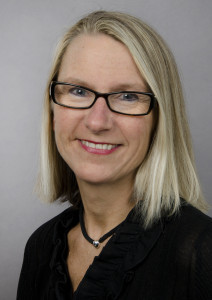 To those who participated in this years teaching day for K1 and K2: thanks for the good cooperation and fruitful participation with questions, comments and discussion.
To those who participated in this years teaching day for K1 and K2: thanks for the good cooperation and fruitful participation with questions, comments and discussion.
To those who weren’t present, here are some key points, including examples of how to make multiple choice tasks.
AMEE (Assocation for Medical Education) arranges an annual international major cogress on Medical education, this year in Bacelona, and next autumn in Helsinki. One can participate to get inspiration for their own teaching (there are lectures, seminars and workshops) and one can happily present their own educatinal project.
MittUiB (where we can post lectures/handouts quizzes etc.) try to do this one for the students: The file Storage will NOT be avaliable to them, which is the place where only we upload our presentations. Each course in one semester has its’ Module (excl. Obstetrics, Gynecology, Gynecologic Oncology each module in the current MEDFØD), where it’s made avaliable to the students to use for the current term. For more explanation, click here and if you log in to MittUiB you’ll find MOFKURS2016 with courses on Canvas (which is the actual name of the program).
The lecture on evidence of eLearning by Rune Haagensen OUS showed good examples from Helse-Bergen (and the bad ones from OUS, talk about the Public courtship…) but the pointed out that this is useful if used in the right context, adapted to the target and as part of multimodal teaching, Learning multichannel delivers more Power than just one Method (example: lectureing alone)
Tobias Slørdahl from NTNU taught about multiple choice that we recommend for all exams (60% of the entire examination, rest short questions = essays) and that it is to be used for upcoming national exam (common to all our Faculty of Medicine). For each task we produce here from UiB we can pick out a task from common question bank (Return of 100%!). If all lecturers stock five tasks to the exam which will be held in their course in the autumn we will have a good beginning for next year’s exam! Hans Flaatten (K1) managed startup “Bergen Bank”, he will be contacting exam responsibles for each deposit. We will also need their own “peer review” undergoing new made questions.
How should a good multiple choice questions be? It should have a brief but necessary introduction, like to patients history (age, gender, where there problem is) with relevant information (symptoms / findings) and then a question as a whole sentence. Create four approximately equal length answer option where one answer should clearly be the best. Correct answer gives 1 point, wrong answers / no answer gives 0 points. Calculate 2 minutes per question, so you can see how many tasks needed for 60% of the exam time, students have at their disposal. Link to Slørdal presentation can be found here.
Here is an example of multiple choice questions:
53 year old man, a professor at K2, did not participate at the Education Day at VilVite autum 2016. What is the most acceptable explanation for the absence?
A He on autumn holiday with the Family, the trip was booked a long time ago and this was resolved administratively.
B He is against changing the curriculum and will leave everything practical respect MittUiB to study administration.
C. He attended the day of instruction two years ago and did not think he should participate until next year.
D He is a natural talent for teaching as well as research and fagmedisin, need no new teaching impulses.
Luckily everyone gets another chance in the spring, and then it’s not autumn holiday … Studies (me) welcomes suggested topics to be clarified
Jone
